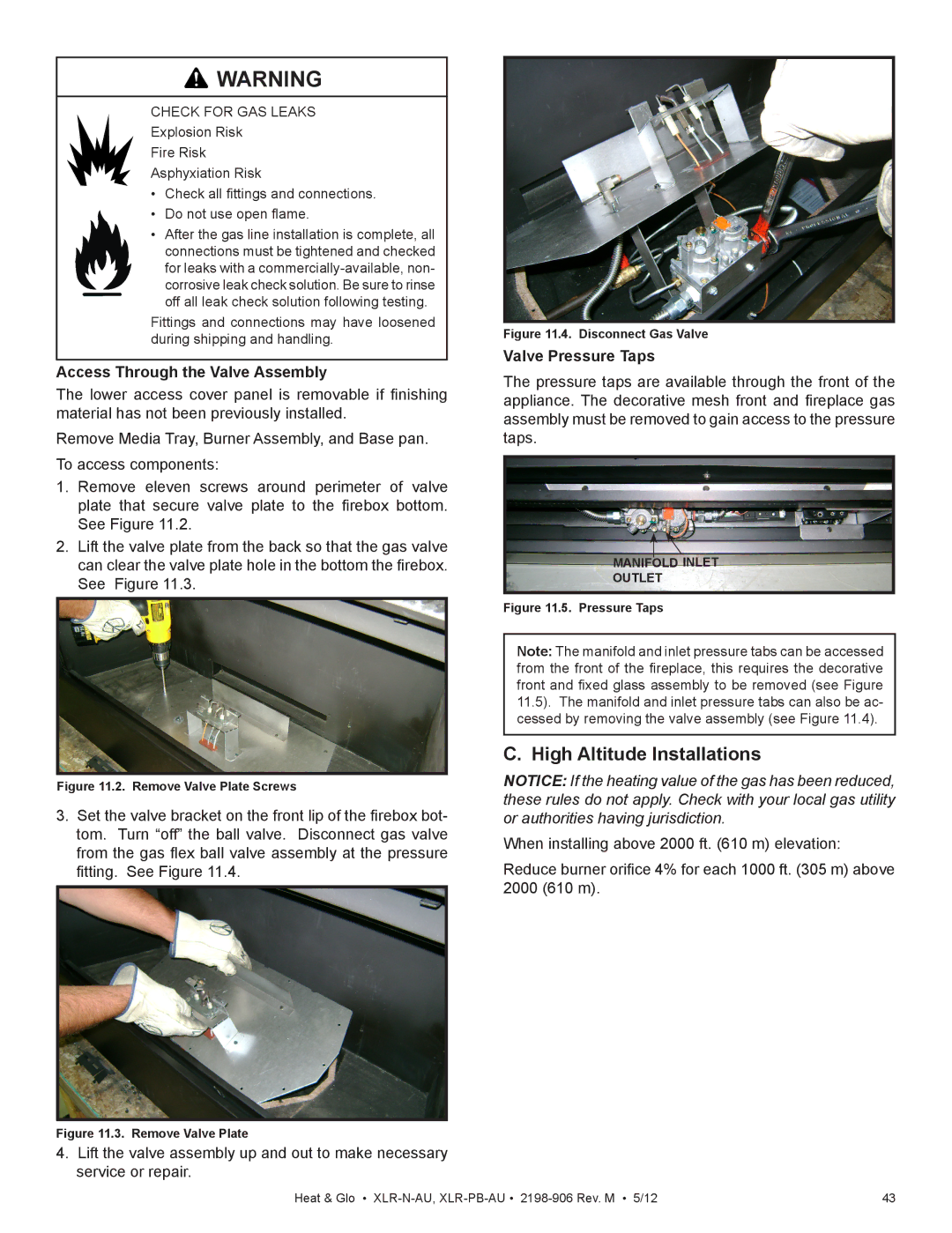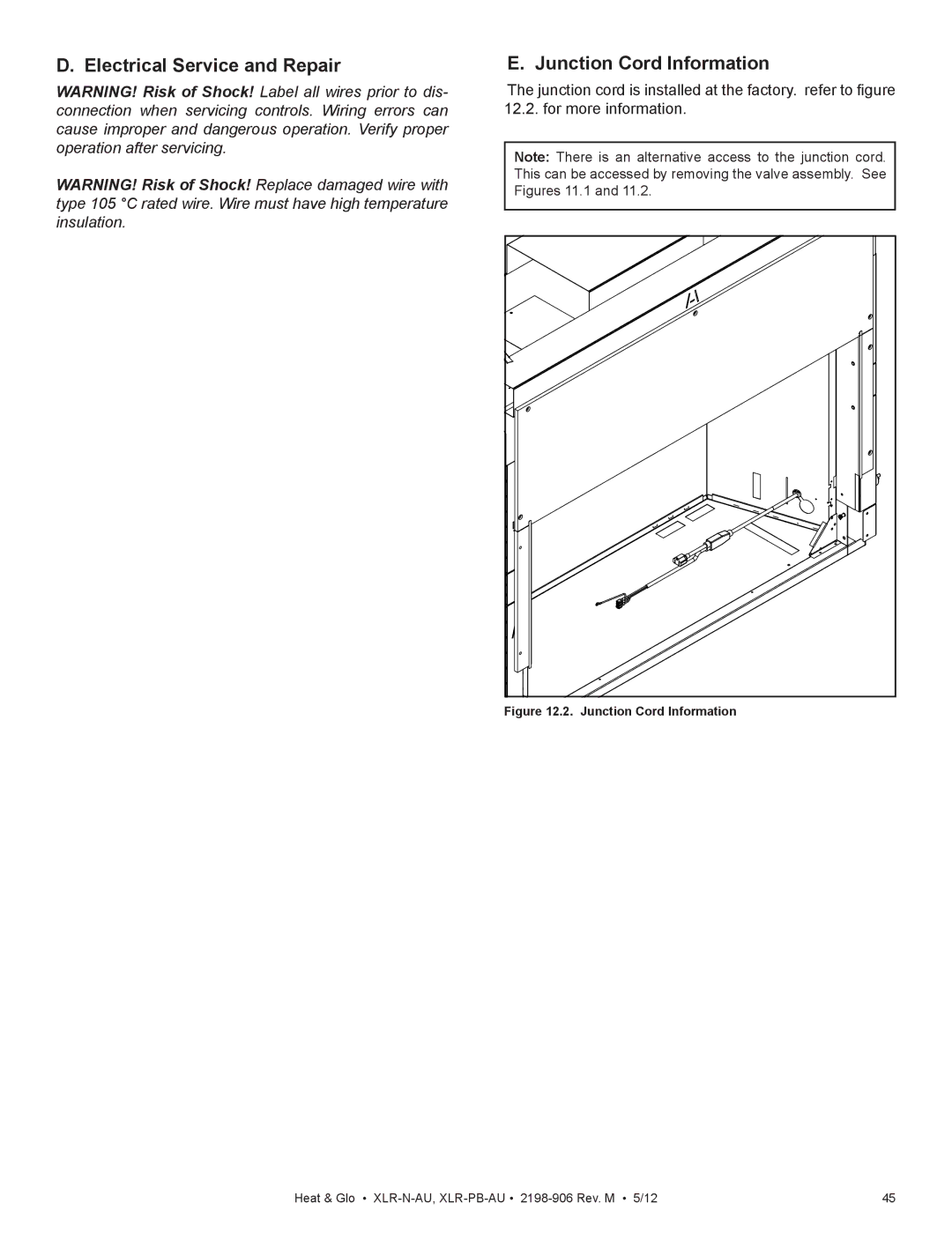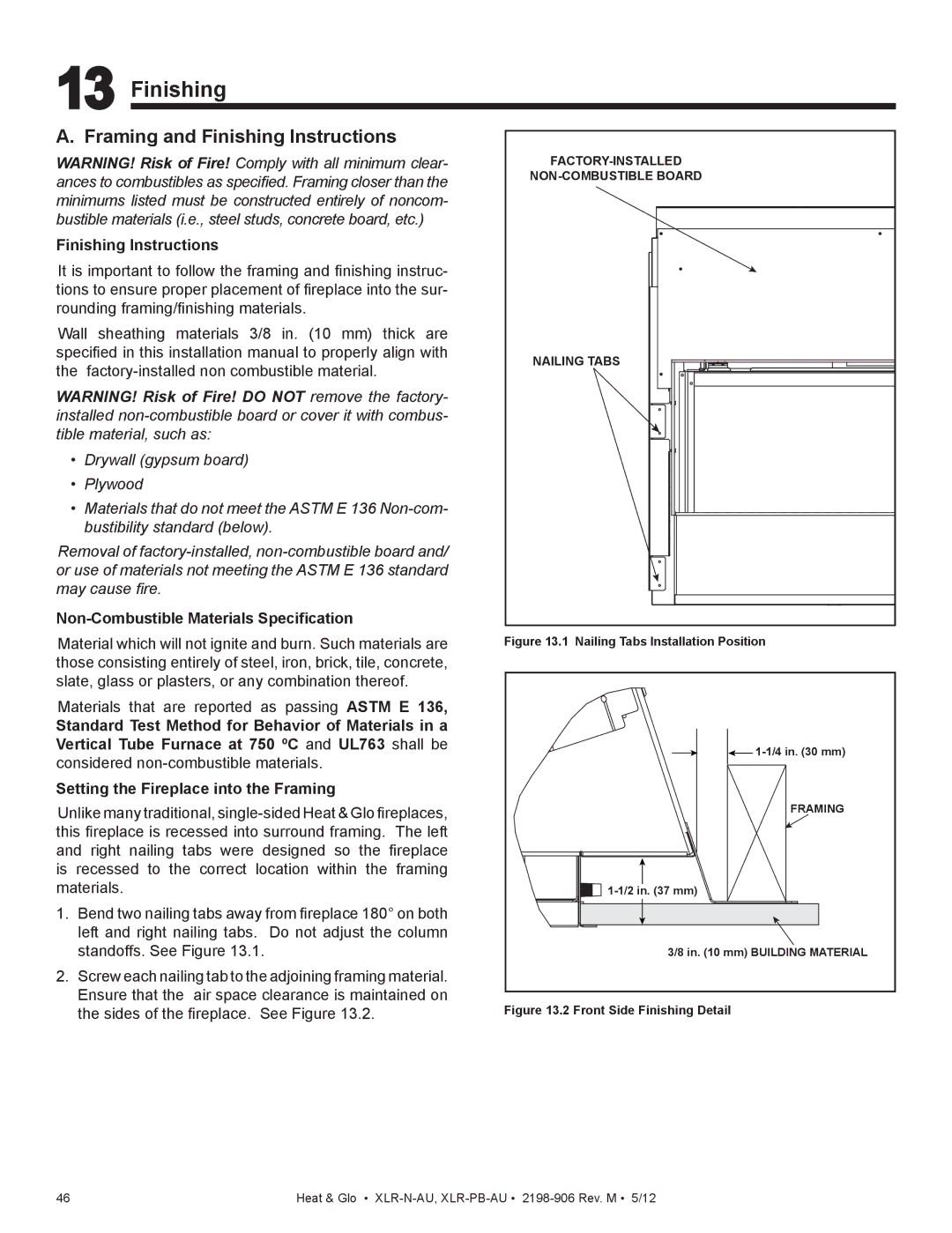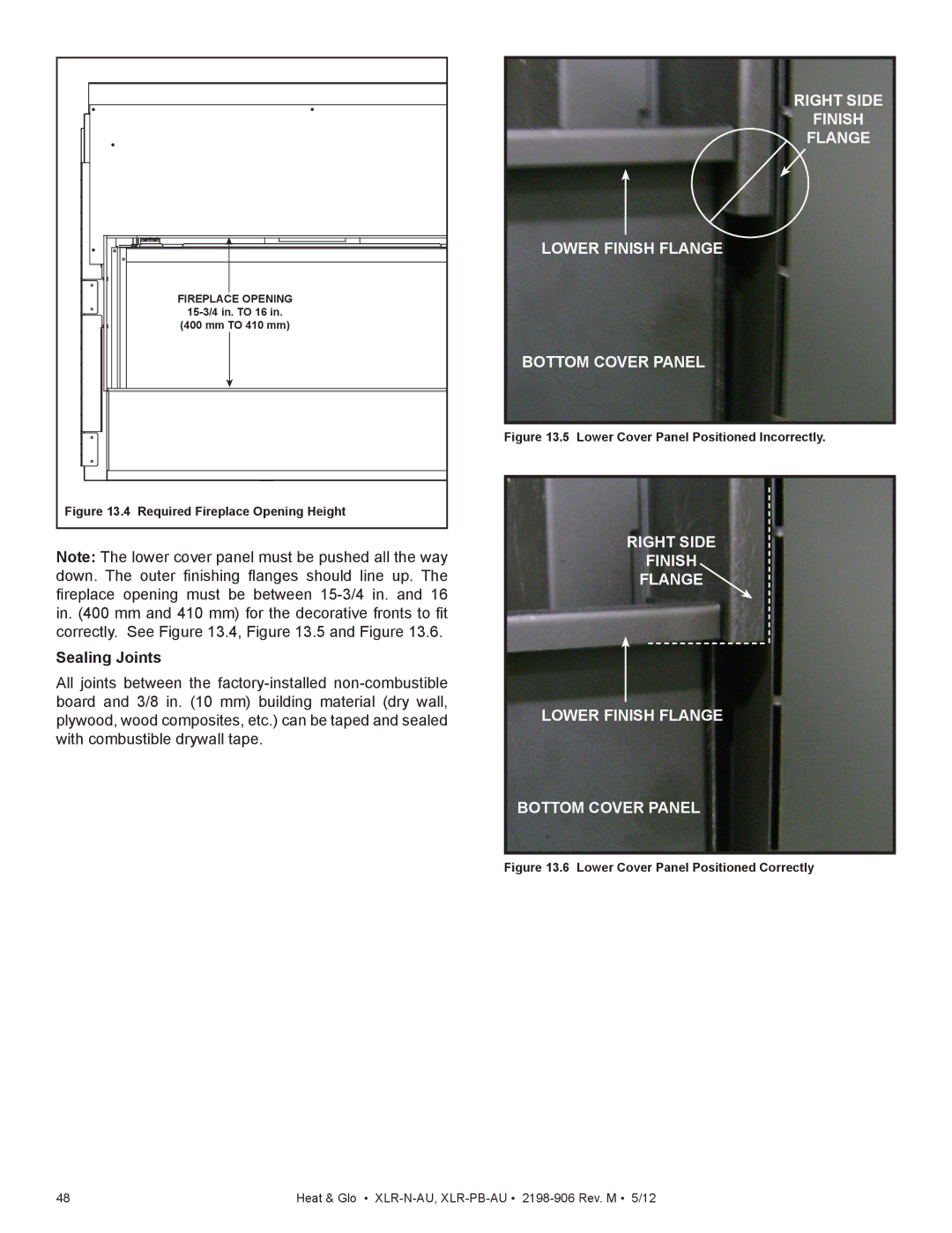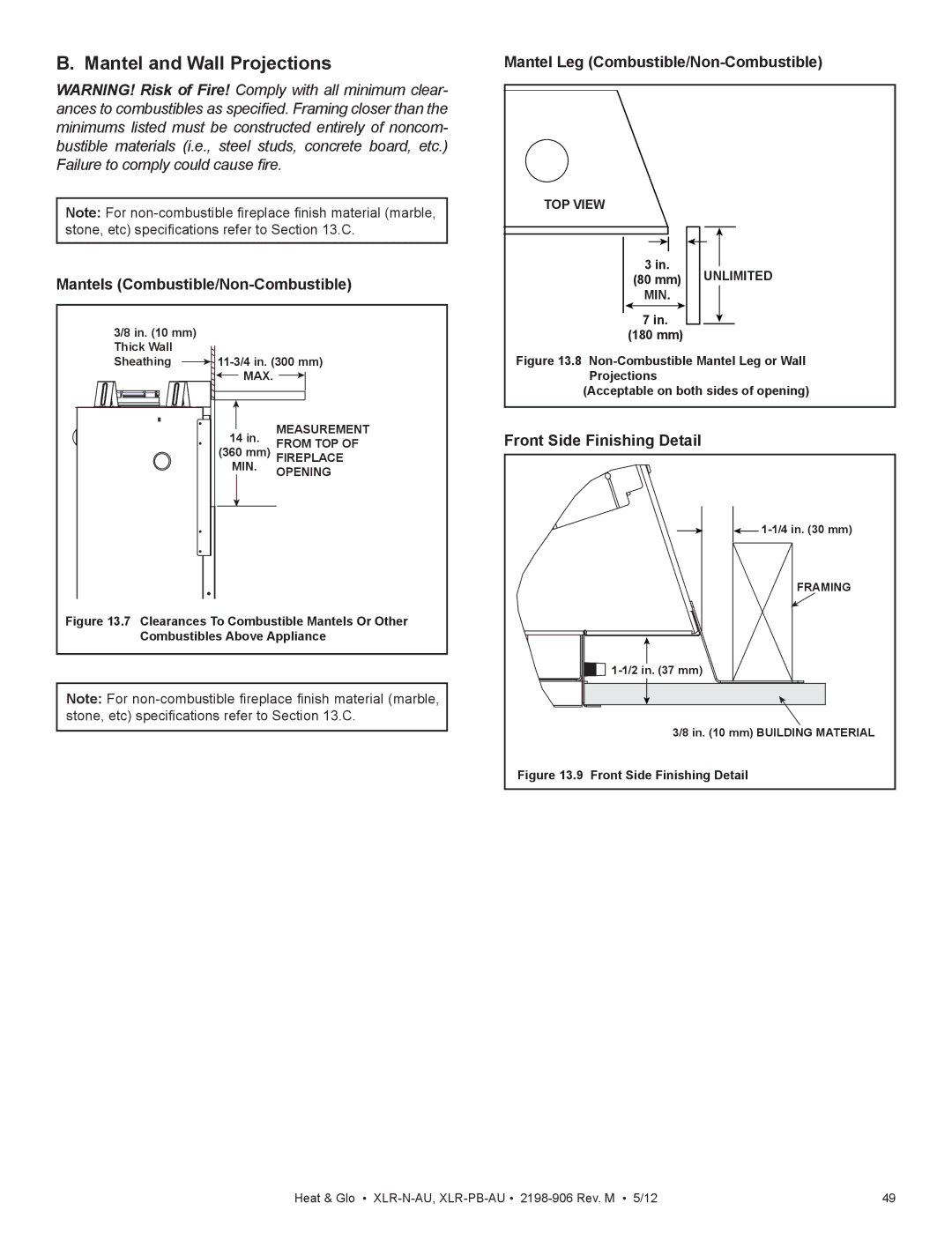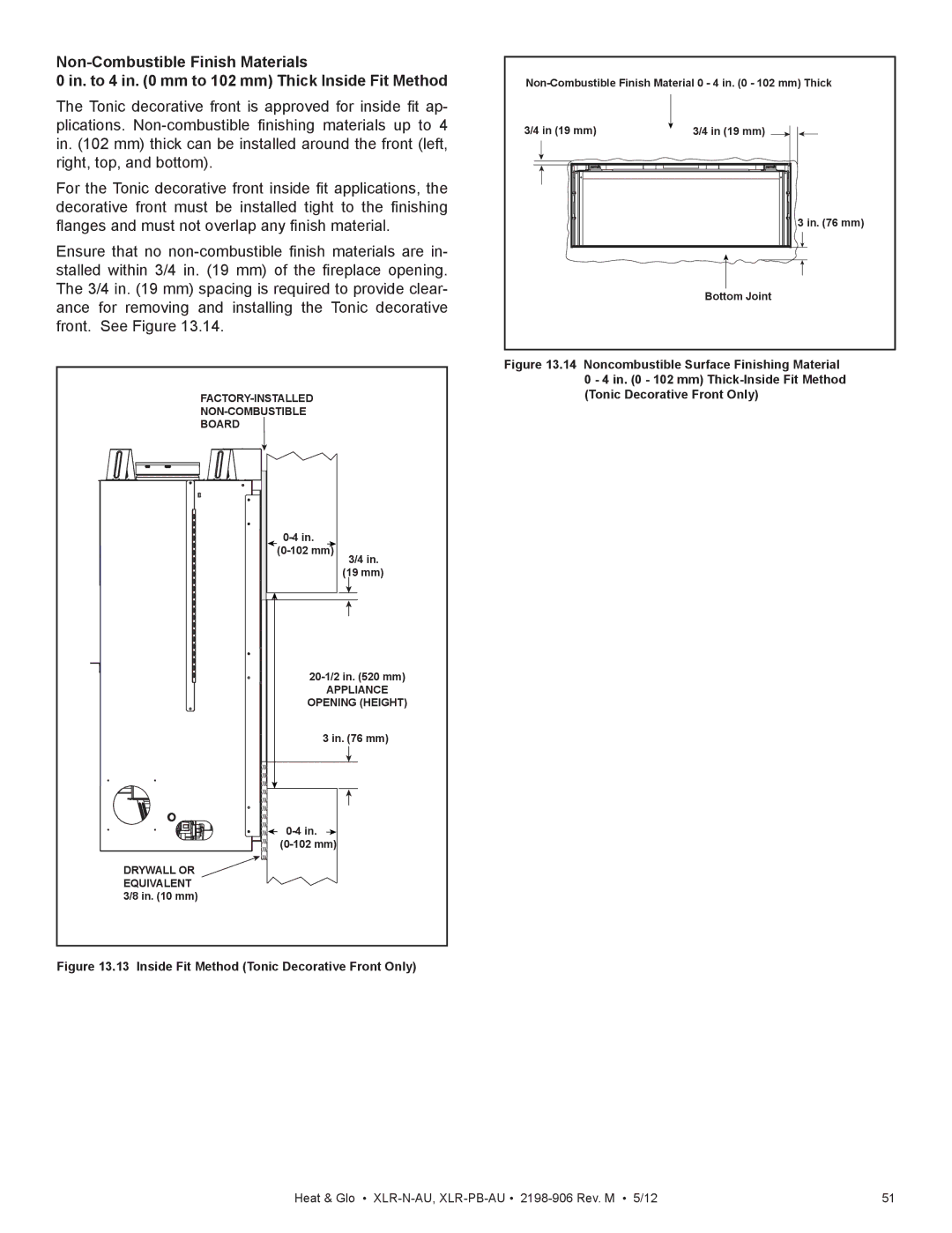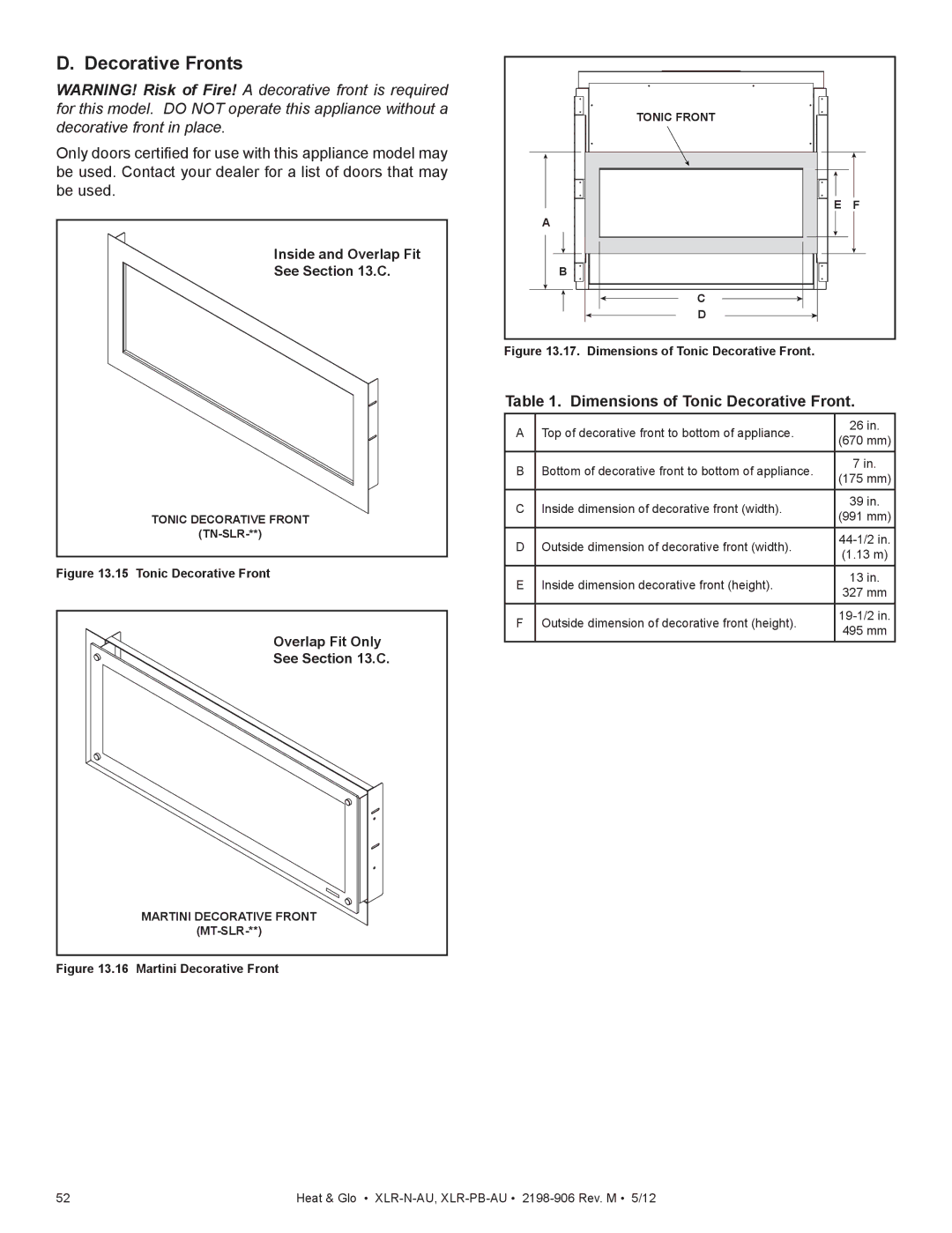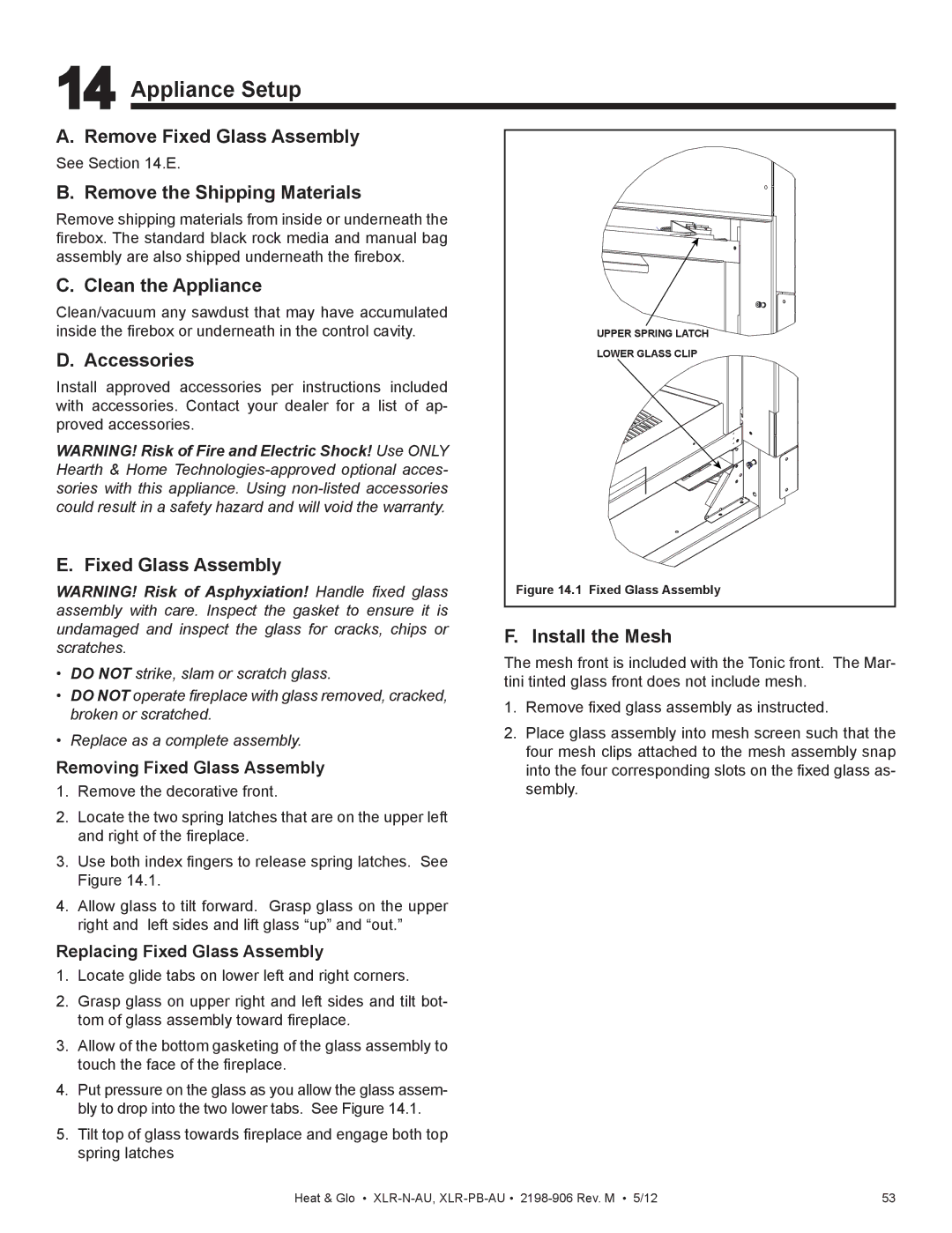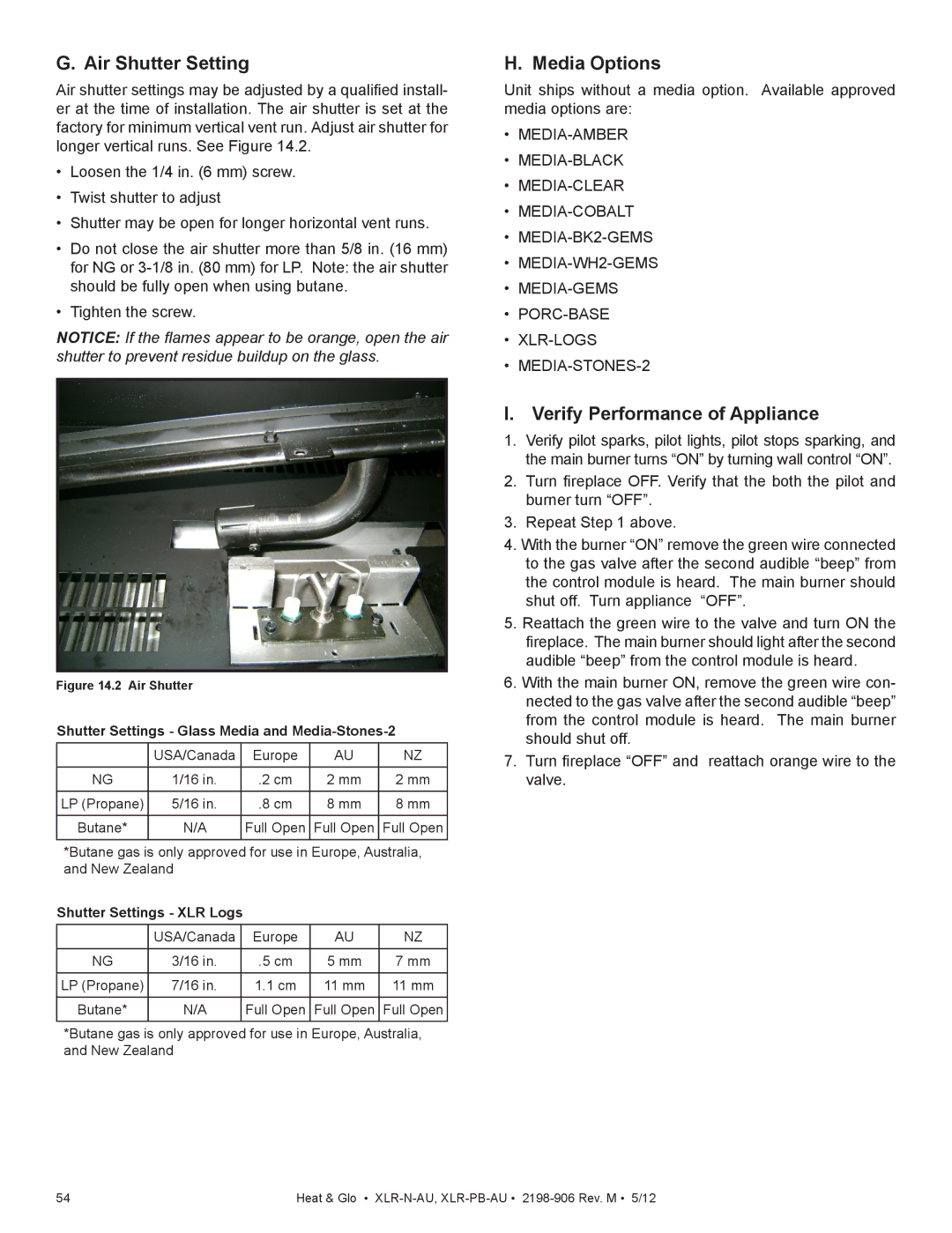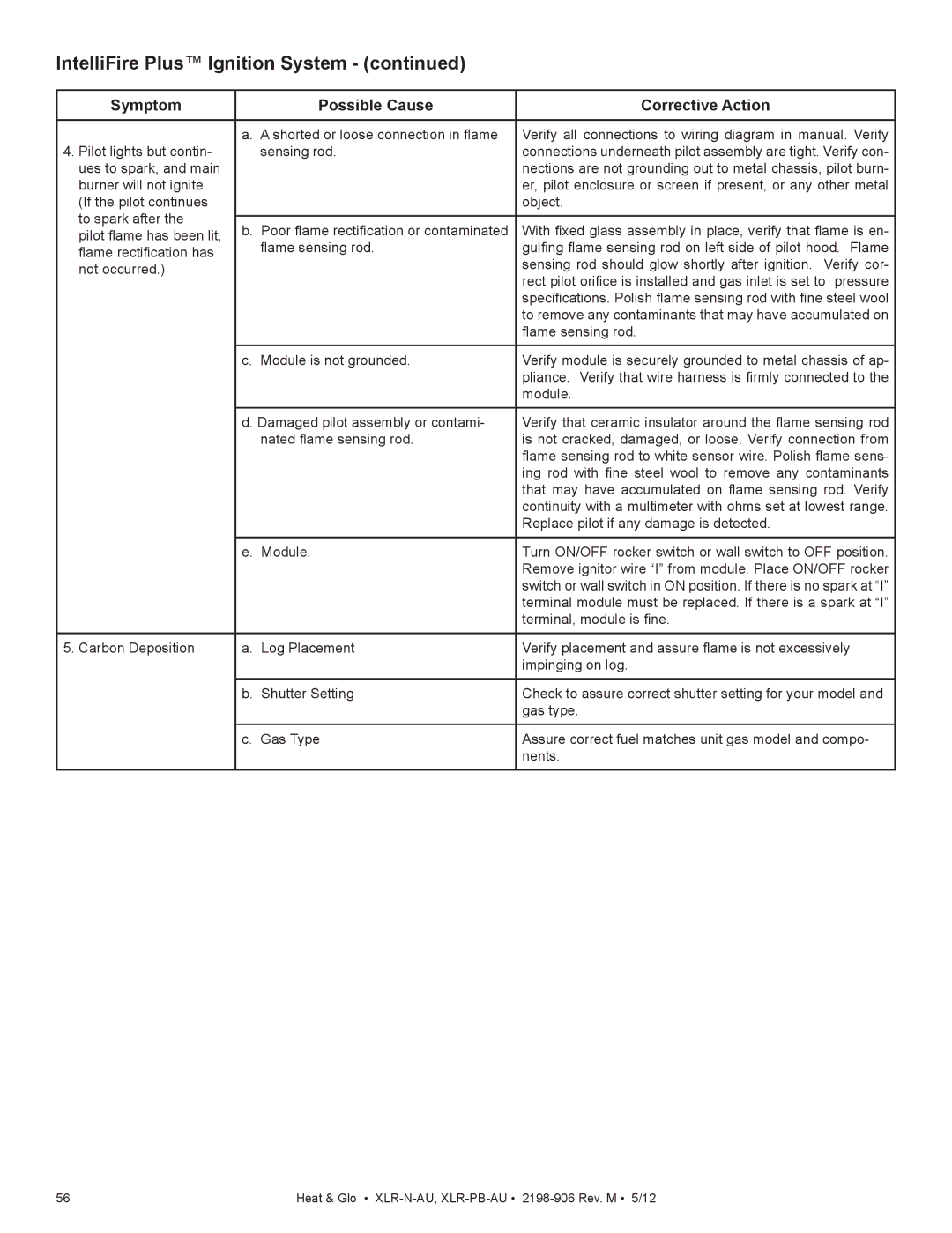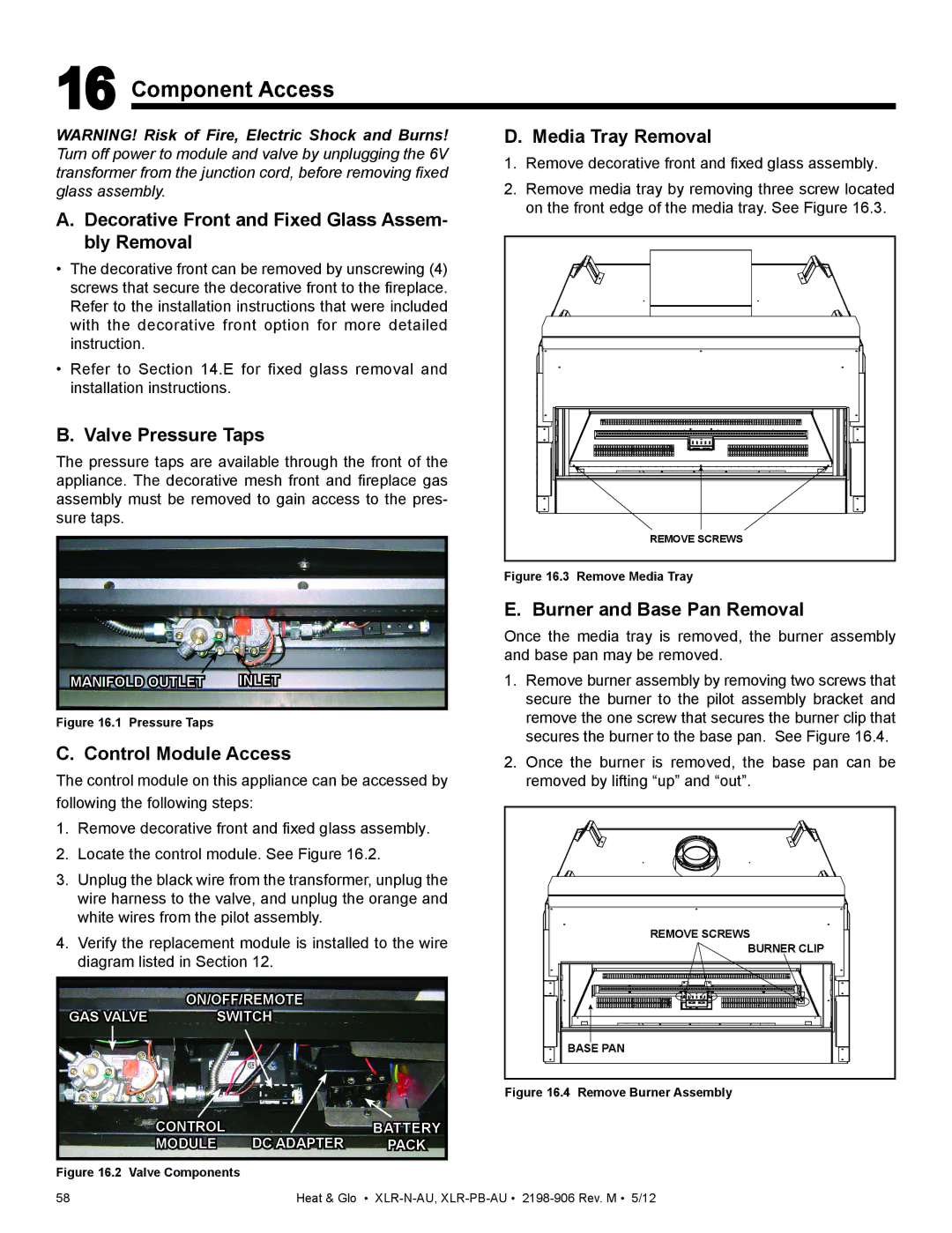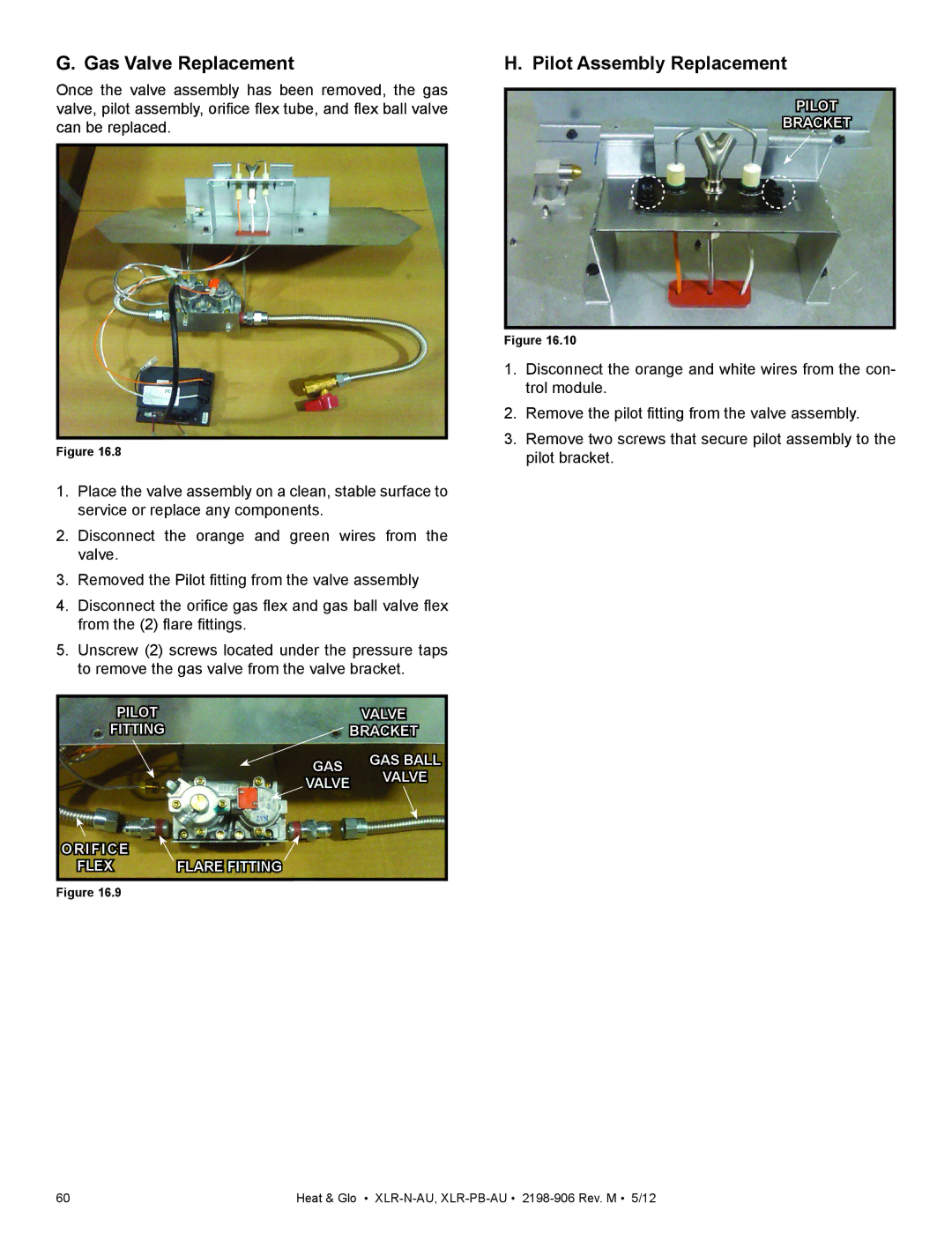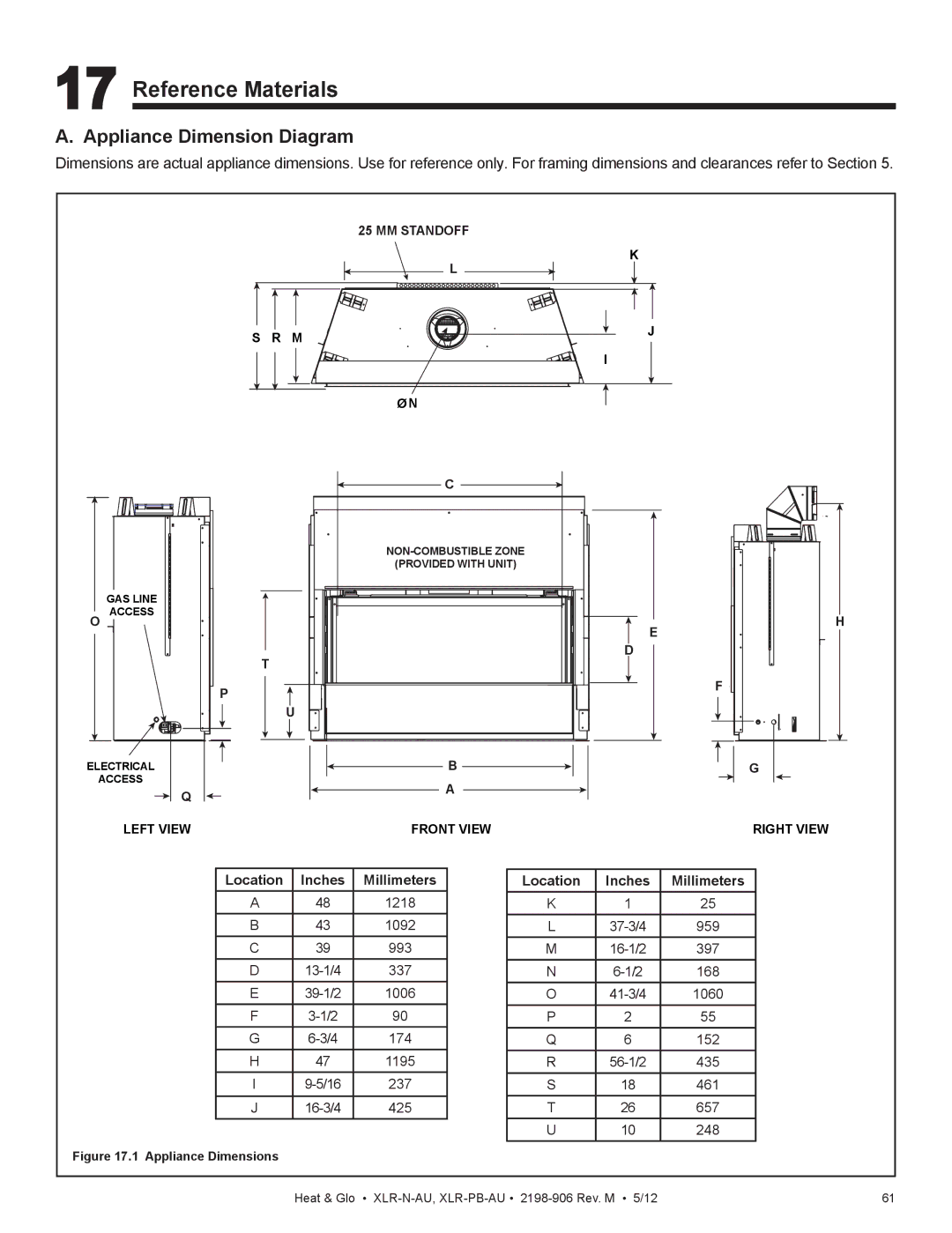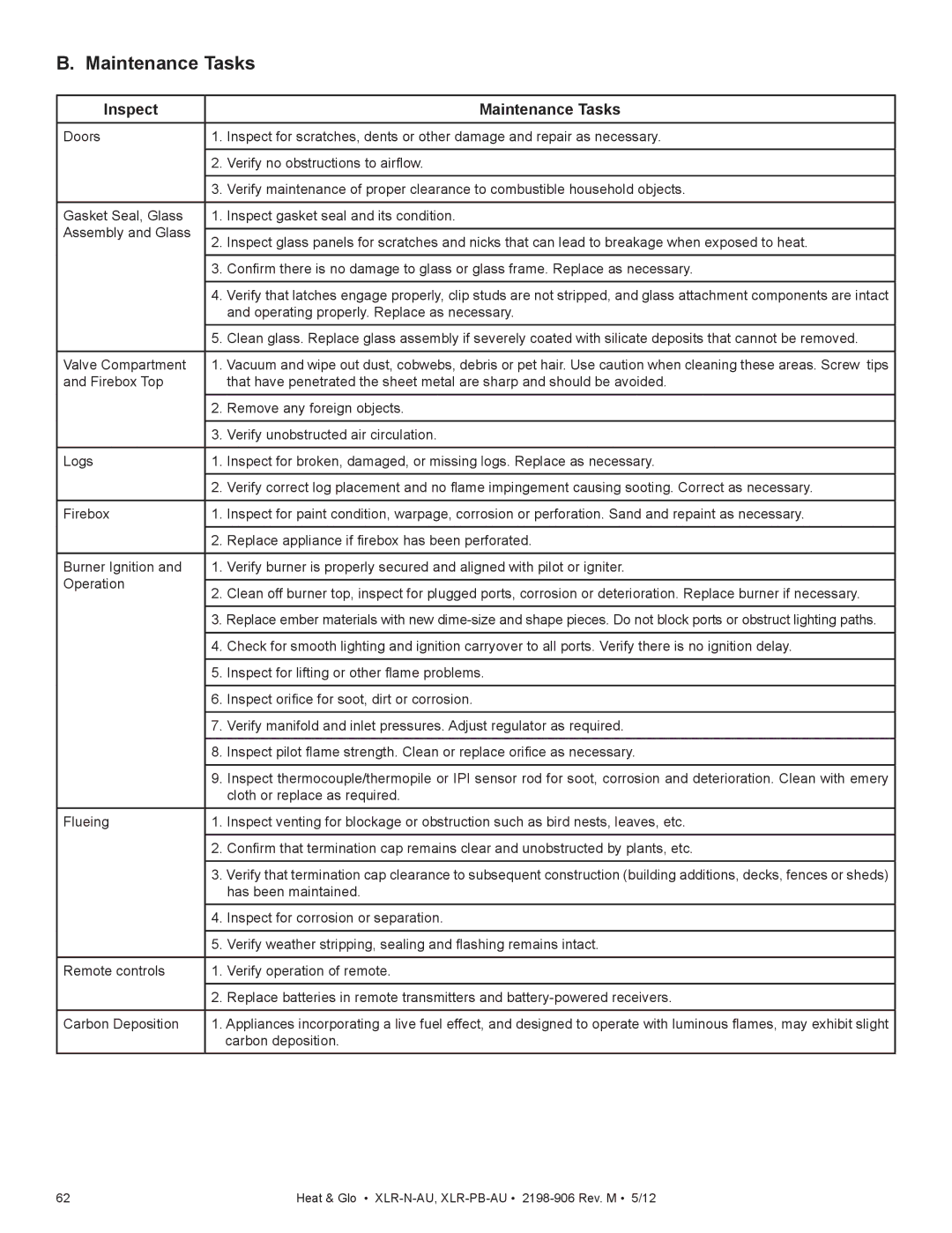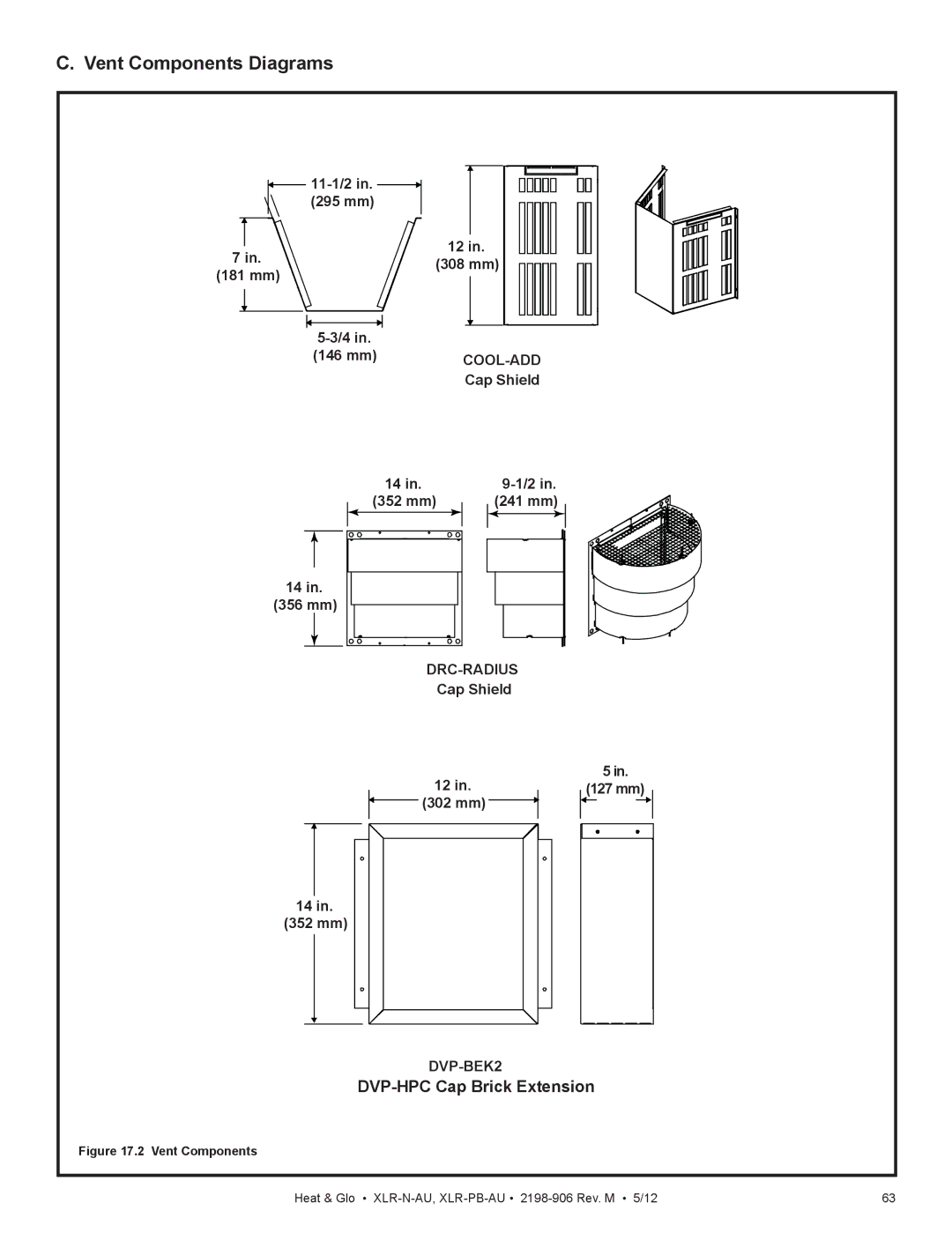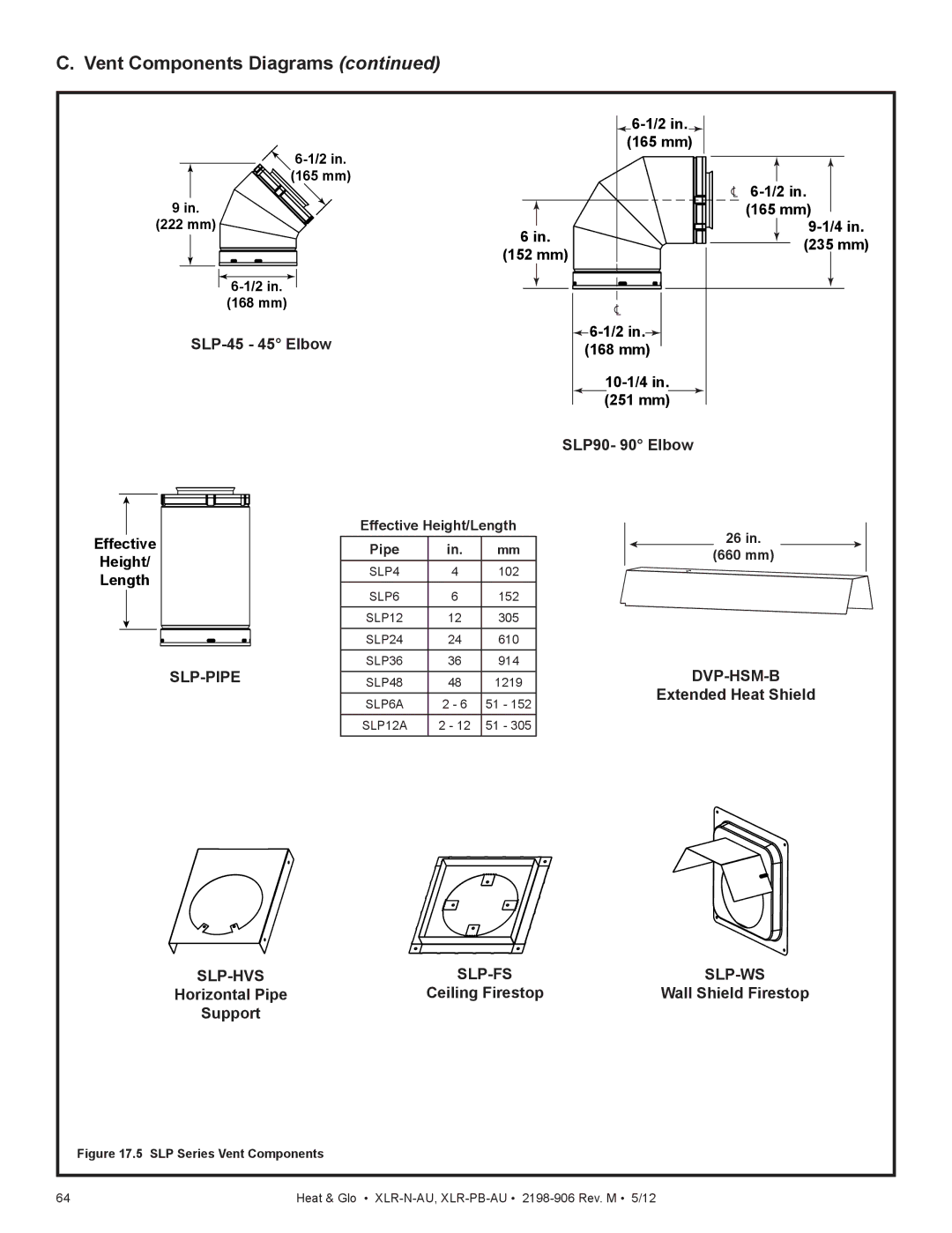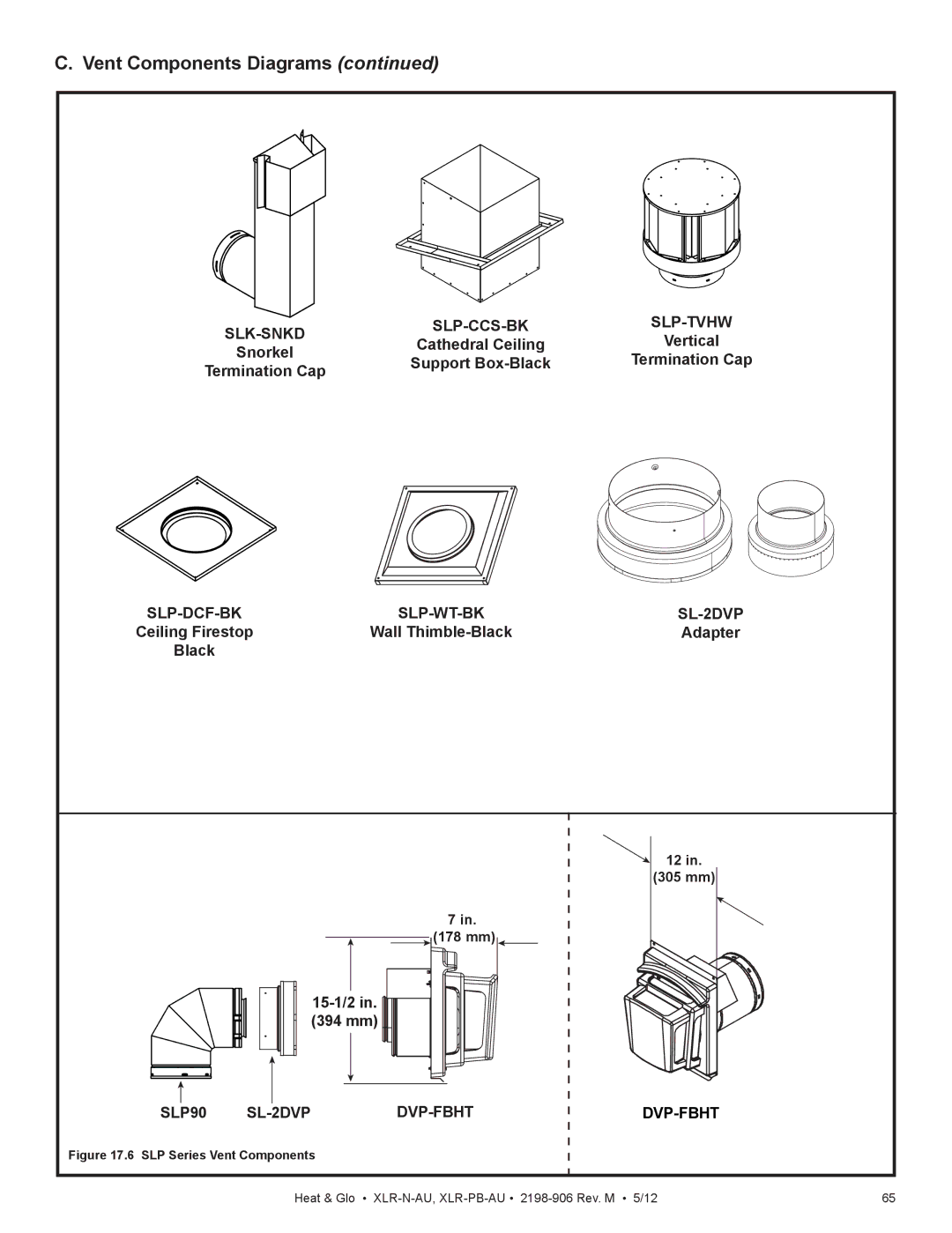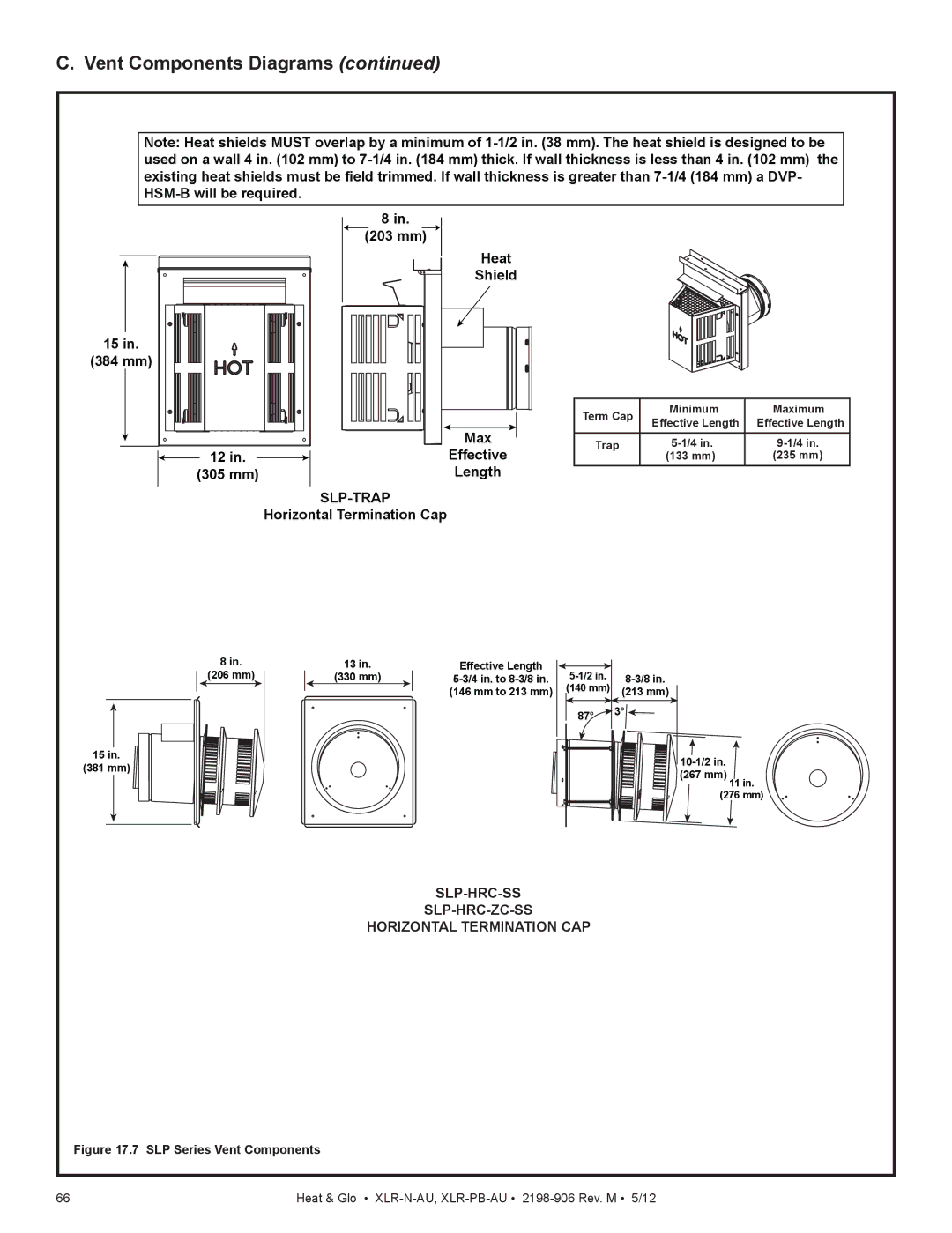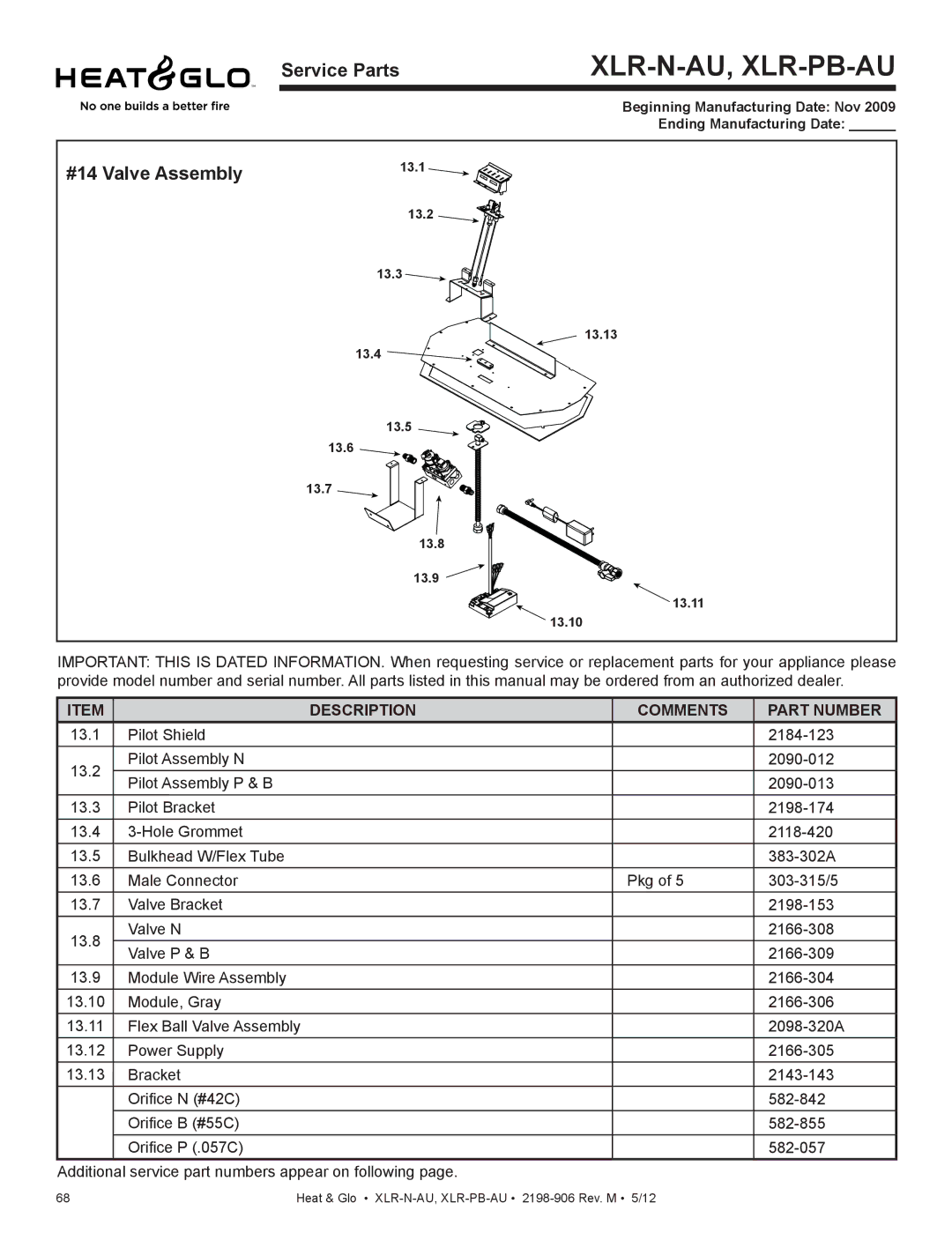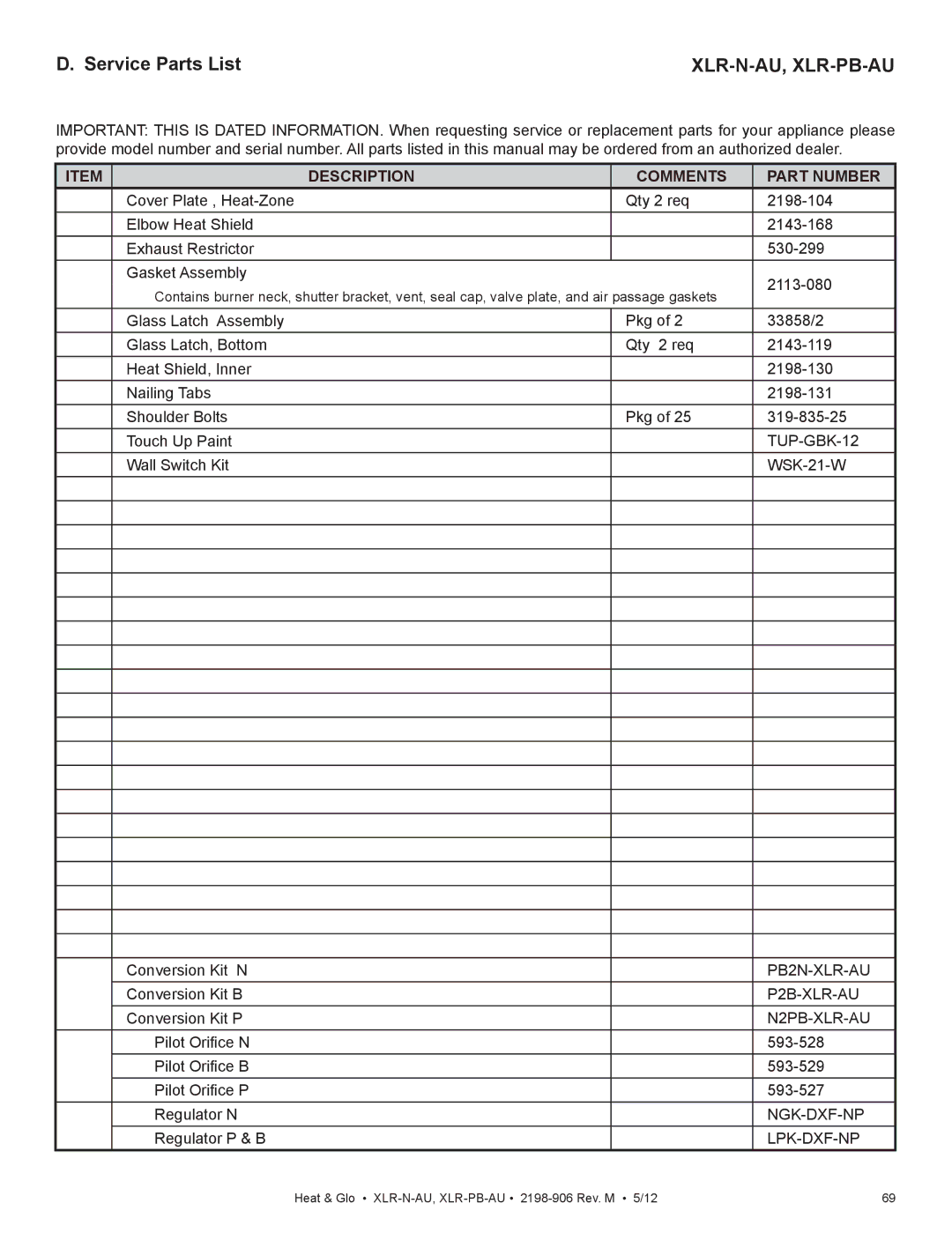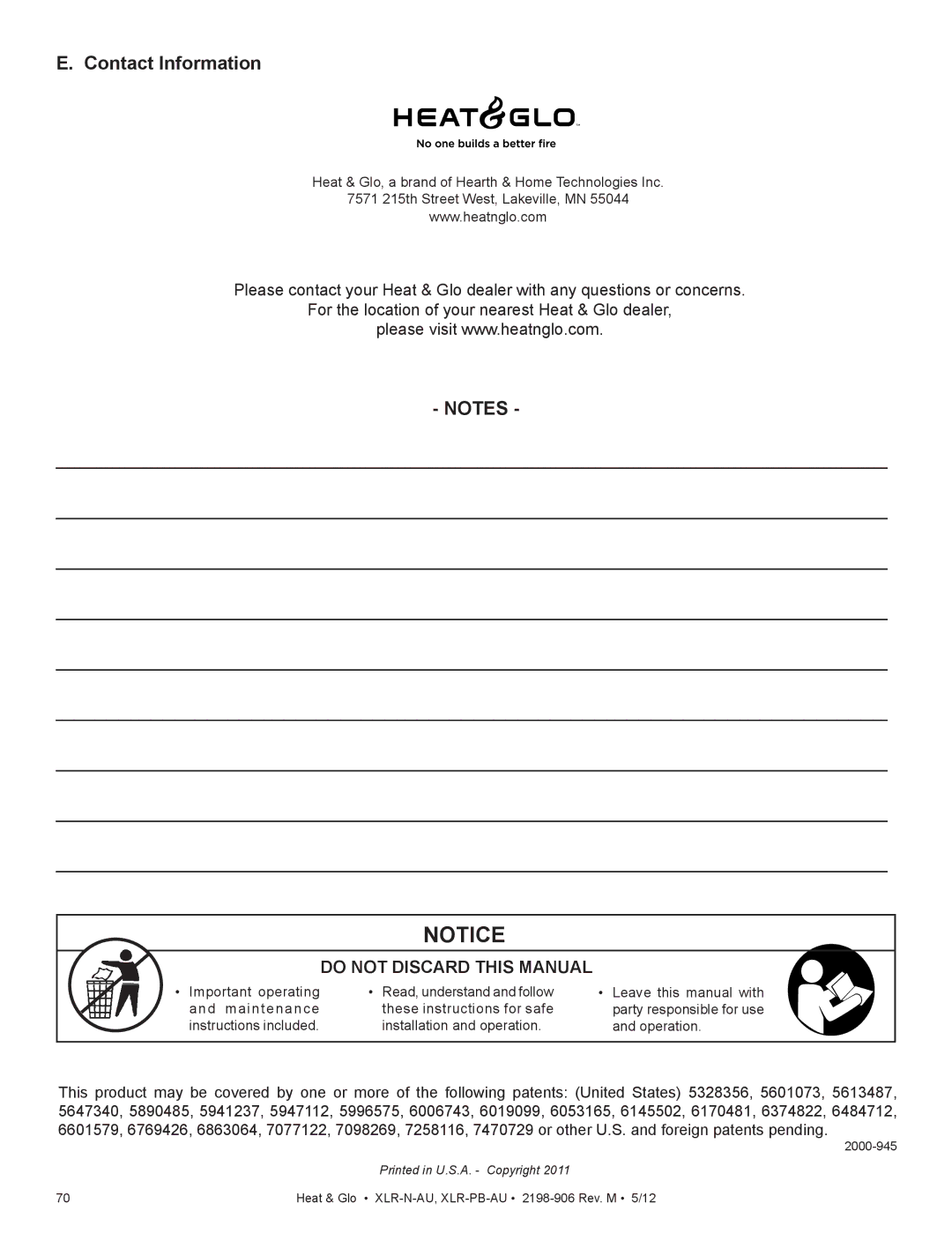15 Troubleshooting
With proper installation, operation, and maintenance your gas appliance will provide years of
A. IntelliFire Plus™ Ignition System
Symptom | Possible Cause | Corrective Action | |
|
|
| |
1. Pilot won’t light. | a. Incorrect wiring. | Verify “S” wire (white) for sensor and “I” wire (orange) for ignitor are | |
The ignitor/module |
| connected to correct terminals on module and pilot assembly. | |
makes noise, but no |
|
| |
b. Loose connections or electrical | Verify no loose connections or electrical shorts in wiring from mod- | ||
spark. | |||
| shorts in the wiring. | ule to pilot assembly. Verify connections underneath pilot assem- | |
|
| bly are tight; also verify connections are not grounding out to metal | |
|
| chassis, pilot burner, pilot enclosure, mesh screen if present, or any | |
|
| other metal object. | |
|
|
| |
| c. Ignitor gap is too large. | Verify gap of igniter to right side of pilot hood. The gap should be | |
|
| approximately 1/8 in. (3 mm). | |
|
|
| |
| d. Module. | Turn ON/OFF rocker switch or wall switch to OFF position. Remove | |
|
| ignitor wire “I” from module. Place a grounded wire about 3/16 in. (5 | |
|
| mm) away from “I” terminal on module. Place ON/OFF rocker switch | |
|
| or wall switch in ON position. If there is no spark at “I” terminal module | |
|
| must be replaced. If there is a spark at “I” terminal, module is fine. | |
|
| Inspect pilot assembly for shorted sparker wire or cracked insulator | |
|
| around electrode. Replace pilot if necessary. | |
|
|
| |
2. Pilot won’t light, | a. No power or transformer installed | Verify that transformer is installed and plugged into module. Check | |
there is no noise or | incorrectly. | voltage of transformer under load at spade connection on module | |
spark. |
| with ON/OFF switch in ON position. Acceptable readings of a good | |
|
| transformer are between 6.4 and 6.6 volts AC. | |
|
|
| |
| b. A shorted or loose connection in wir- | Remove and reinstall the wiring harness that plugs into module. | |
| ing configuration or wiring harness. | Verify there is a tight fit. Verify pilot assembly wiring to module. Re- | |
|
| move and verify continuity of each wire in wiring harness. Replace | |
|
| any damaged components. | |
|
|
| |
| c. Improper wall switch wiring. | Verify that | |
|
|
| |
| d. Module not grounded. | Verify black ground wire from module wire harness is grounded to | |
|
| metal chassis of appliance. | |
|
|
| |
| e. Module. | Turn ON/OFF rocker switch or wall switch to OFF position. Remove | |
|
| ignitor wire “I” from module. Place ON/OFF rocker switch or wall | |
|
| switch in ON position. If there is no spark at “I” terminal module | |
|
| must be replaced. If there is a spark at “I” terminal, module is fine. | |
|
| Inspect pilot assembly for shorted sparker wire or cracked insulator | |
|
| around electrode. | |
|
|
| |
3. Pilot sparks, but | a. Gas supply. | Verify that incoming gas line ball valve is “open”. Verify that inlet | |
Pilot will not light. |
| pressure reading is within acceptable limits, inlet pressure must not | |
|
| be exceeded. | |
|
|
| |
| b. Ignitor gap is incorrect. | Verify that spark gap from ignitor to pilot hood is 1/8 in. (3 mm). | |
|
|
| |
| c. Module is not grounded. | Verify module is securely grounded to metal chassis of appliance. | |
|
|
| |
| d. Module voltage output / Valve/Pilot | Verify battery voltage is at least 5.7 volts. Replace batteries if volt- | |
| solenoid ohms readings. | age is below 5.7. | |
|
|
|
Heat & Glo • | 55 |
